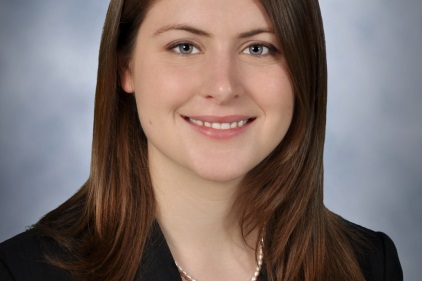Andrea Baird is an Architect with Building Technology Consultants PC in Illinois.
Recently, W&C sat down to talk to Andrea about her career.
W&C Architect: How many years do you have in the profession?
 Baird: I have been working full-time for 8 years. My university had an excellent cooperative education program that allowed me to work for 2 semesters in the industry. I was fortunate to spend one of those semesters in Fairbanks, Alaska.
Baird: I have been working full-time for 8 years. My university had an excellent cooperative education program that allowed me to work for 2 semesters in the industry. I was fortunate to spend one of those semesters in Fairbanks, Alaska.
W&C Architect: What is your work history in this field?
Baird: I have had the opportunity to experience several aspects of the building industry during the early years of my career. After graduating, I started working at Hobbs + Black Architects in Ann Arbor Michigan. There, I mainly worked on new design and historic restoration projects. After a couple of years, I relocated to Chicago, taking a position with Graef as a structural designer. I then went to a small building enclosure consulting company in Houston where I learned the fundamentals of building science, and gained valuable experience on construction sites.
In 2011 I returned to Chicago to join Building Technology Consultants, where I specialize in building enclosure consulting. I help other architects design their buildings to perform better, and help owners of existing buildings with building performance issues. I consider my work to be a hybrid of architectural and engineering professions.
W&C Architect: Where did you go to school?
Baird: I graduated from the University of Detroit Mercy in 2006 with a Master of Architecture and Master of Engineering.
W&C Architect: Did you have a specialization?
Baird: My concentration during school was in structures. My intention was to have a sound technical background to inform design decisions.
W&C Architect: Do you approach architecture from an artistic or functional starting point? Are the two concepts exclusive?
Baird: I think good design requires both. When it comes to buildings, beautiful design isn’t successful unless it is functional and durable. At the same time, spaces must be pleasant to occupants.
W&C Architect: What projects, other than your own work, do you find inspiring?
Baird: Living in Chicago, it’s difficult to not to be inspired by the built environment. I am particularly fond of the historic structures such as the Rookery and The Auditorium Building. Although these buildings are iconic, there is a lot to learn from structures that have been adaptable through various program changes, economic climates, and changes in building system technology.
W&C Architect: How many buildings have you designed?
Baird: I have been involved with over 50 projects, all as part of a team.
W&C Architect: If you had to choose one to represent your work, what project would you choose?
Baird: Unfortunately my largest and most challenging project is still under litigation, so I can not disclose the building. This project is complex in geometry, material and system interfaces, litigation requirements, and scheduling.
W&C Architect: What are your guiding principles when designing a structure?
Baird: When I am contributing to the design of a building, I am primarily concerned with performance, indoor air quality, and durability. I have the benefit of learning from design and construction mistakes during forensic investigations and applying that knowledge to new design and restoration.
W&C Architect: If you could have any building to redesign—anywhere in the world—which would you like to address?
Baird: Generally, I am interested in rehabilitating our historic building stock. There are plenty of abandoned or deteriorated buildings that we cannot afford to rebuild.
W&C Architect: What types of products interest you?
Baird: Durable and inert materials such as stone, metal, and terra cotta.
W&C Architect: What types of products in the wall and ceiling industry really interest you?
Baird: I am interested in innovative insulation, roofing, air barrier, and low-maintenance cladding materials.





Report Abusive Comment